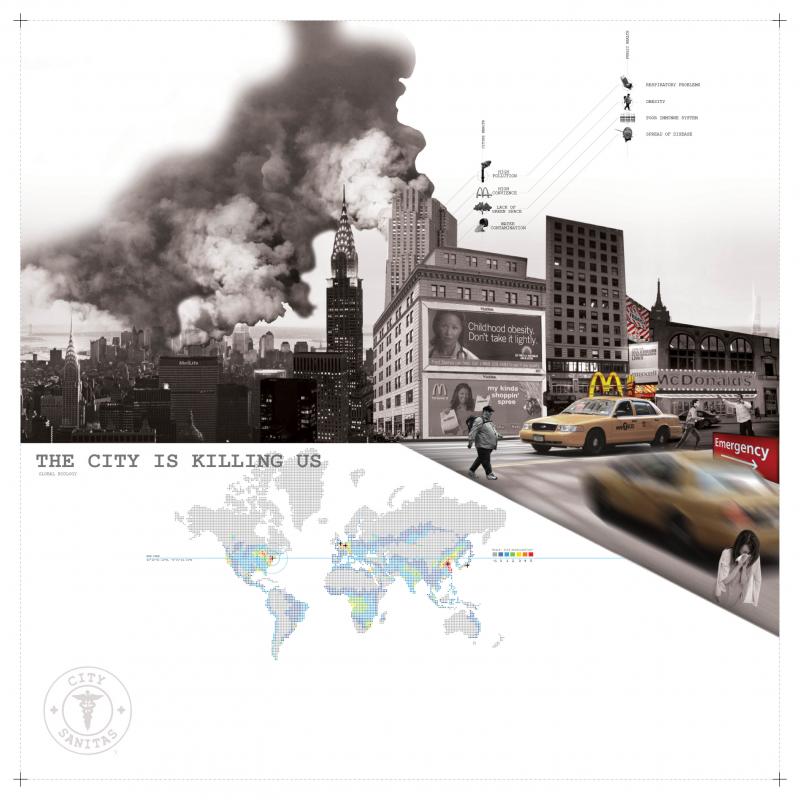

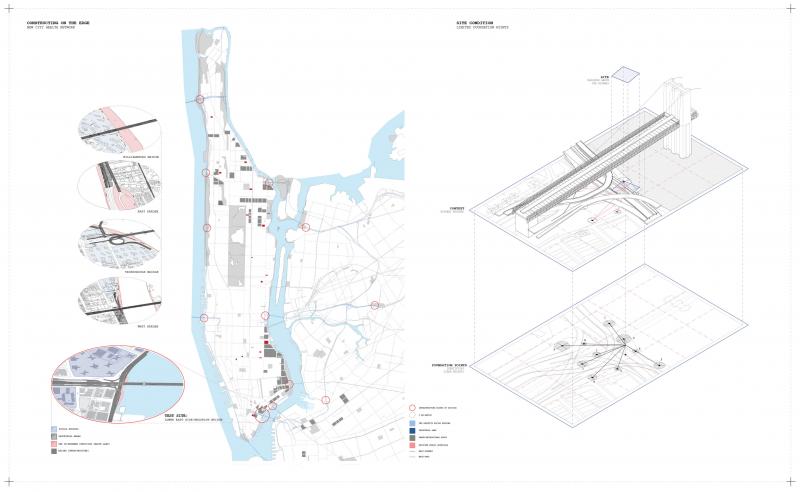
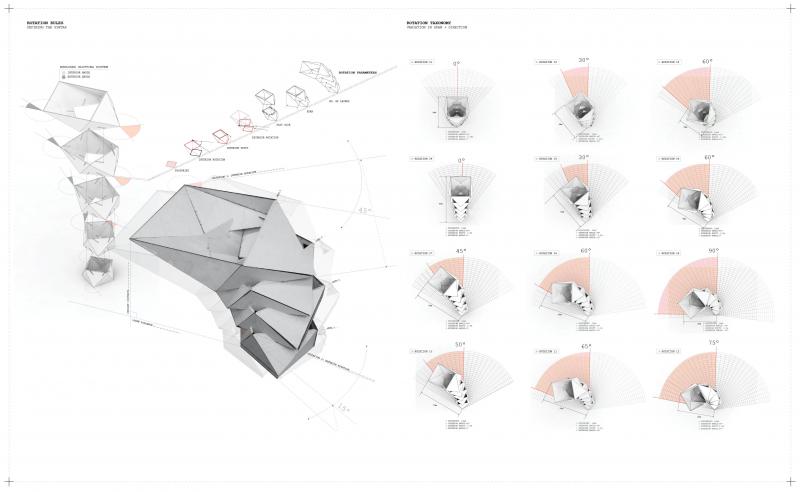
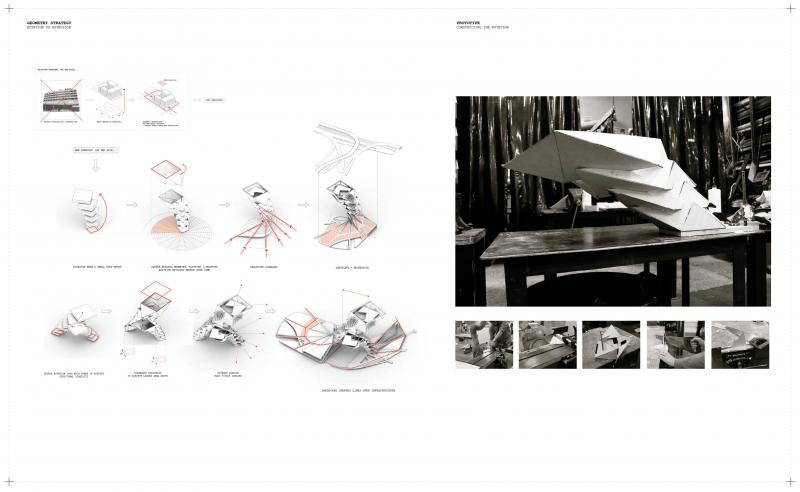
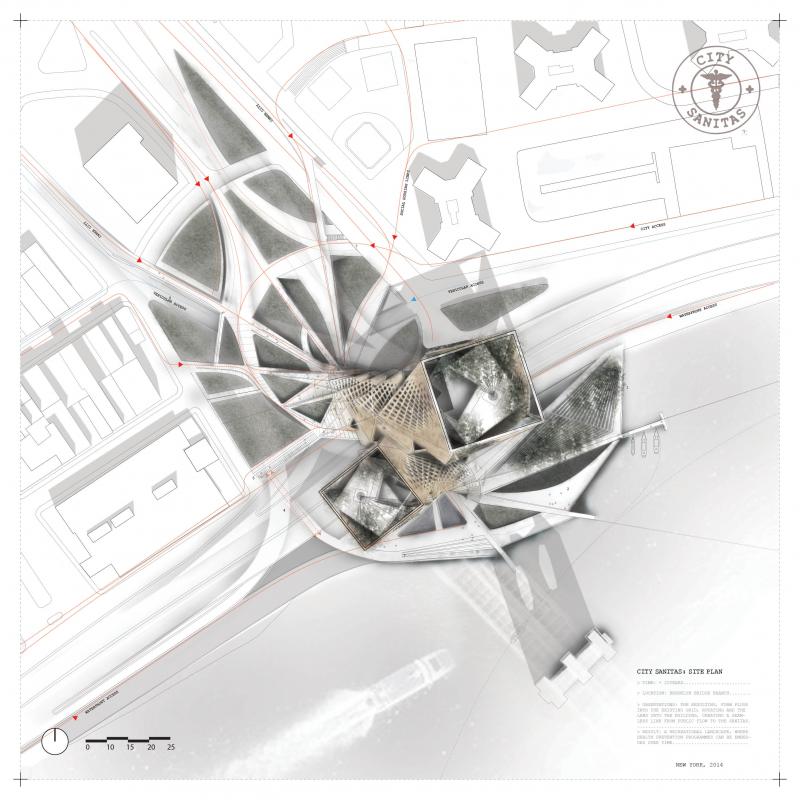
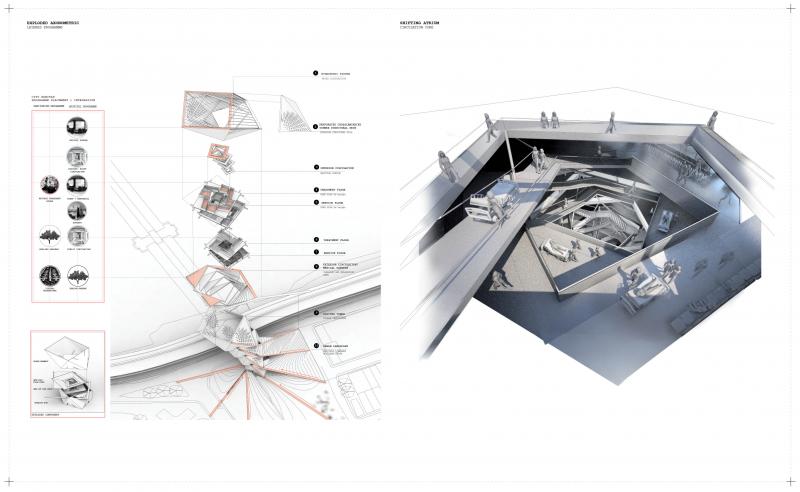
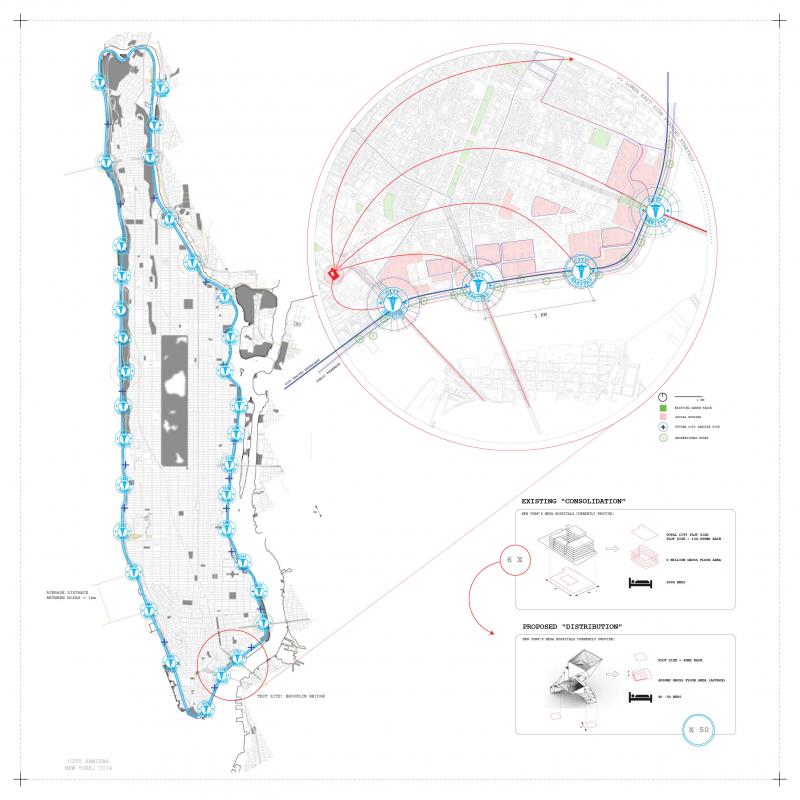
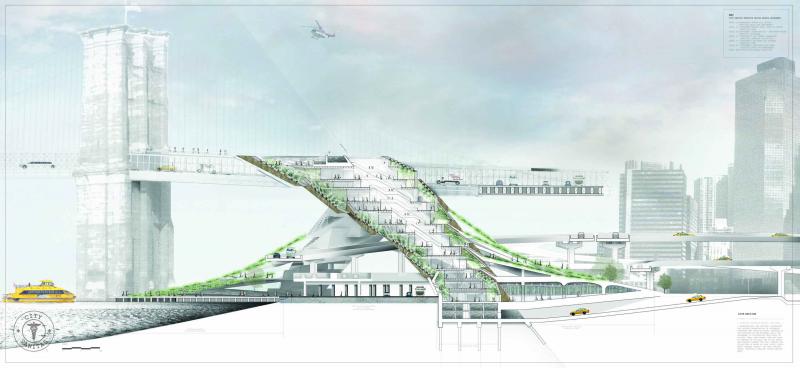
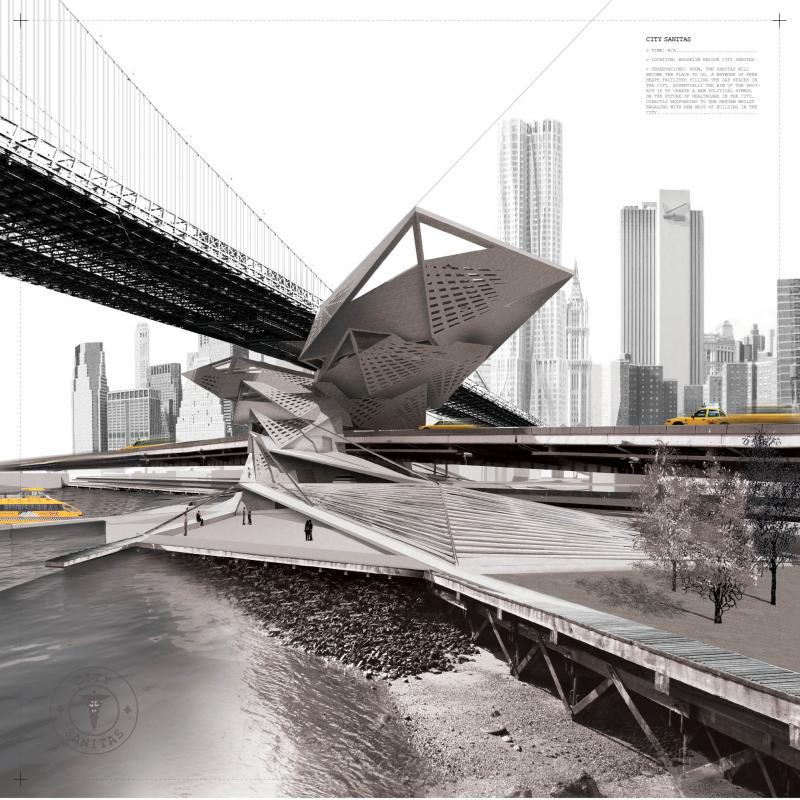
City Sanitas
The thesis explores the role of public space in the privatised world of the global city, using the US 2014 health care reform bill as a catalyst to create a new public urban typology.
Located in New York, City Sanitas proposes an alternative type of immediate health care, bridging the existing system through the creation of separate primary source centres for the newly insured. Using opportunities of the primarily undeveloped coastline, a new public “belt” will be developed, which over time will grow to form a new coastal landscape, linking the city back to its waterfront . The result proposes to become an urban prototype to occupy a network of these edge conditions that currently exist around the city: New York’s future public health network.
Spatially, the project explores rotation as a means to create new ground over the infrastructure, multiplying the number of connections allowing it to become part of the cityscape . Unlike the static solid masses engulfed by the high-rise blocks, the rotated ground becomes key in creating a flexible programme between public and private space, allowing for flexible occupation, where the facilities are able to expand over time according to societies needs. The result intends to reactivate the edge condition, becoming an exciting public space, opening the city back up to its coastline.